Jeff has a new long termer. Last year after hand surgery, he used a D'eLight 125 to help get back on the road. Now he has upgraded to an NMAX 155 after his second surgery. Here's month one...
A scooter is a fun thing. I’ve always had a soft spot for them, as you can read here, particularly Yamaha’s, as I’ve owned a few. My rehab from injury to my hands and wrists after a crash in early 2022 has been a long one, but greatly helped by the Yamaha NMAX.
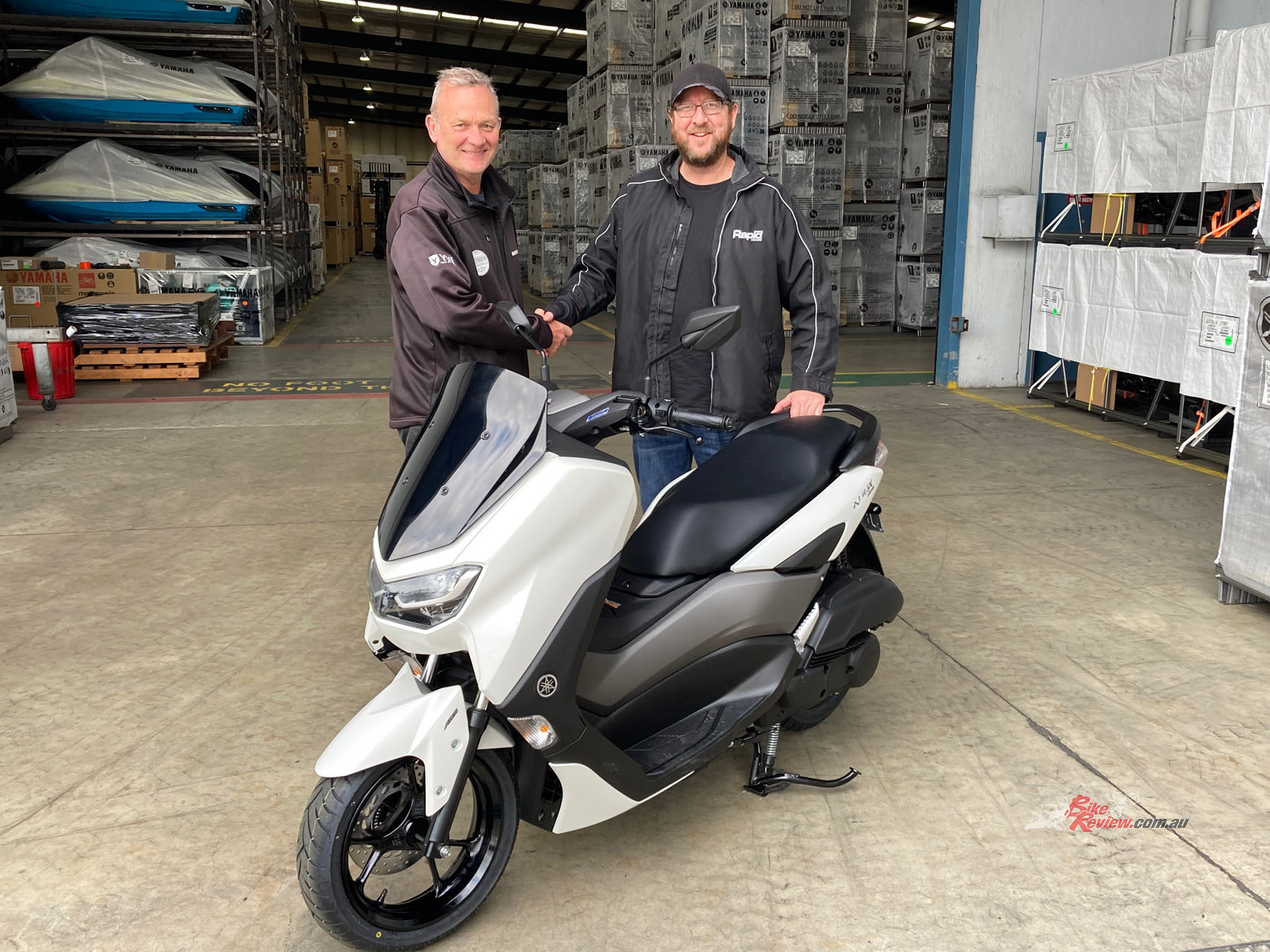
Jeff takes delivery of the BikeReview Yamaha NMAX 155 from Yamaha Motor Australia Marketing Manager, Sean Goldhawk. It’s not quite the old Staff Bikes YZF-R1s, XJR13s and other beasts we used to built with Yamaha!
Without going on about it too much, a lot of you may be aware that I had a massive crash on an adventure bike while doing a photoshoot back in March 2022. This led to multiple hand surgeries and ongoing rehab for two years. The surgeon did one hand at a time, and in between surgery, I could ride for a few months here or there, but mostly only on a scooter to start with. Yamaha threw me the key to a D’eLight 125 last year as a long termer, then the Yamaha YDX Moro-07, which you can read about here, and both helped me get back to big bikes and bike fit last year.
I had to have another surgery in January, then three months in a cast and splint for my right hand, so I was keen to do the scooter thing again, and this time Yamaha suggested an NMAX 155, so I can ride as far as Sydney from the Central Coast, as it does highway speeds. I picked the brand new Milky White NMAX 155 up late March, with 0km on the dial, and trailered it back to BikeReview HQ.
As soon as I got back, it was off the trailer and off for my first ride on two-wheels for three months. It felt bloody awesome to be back, and it’s always a cool experience riding a bike or scooter from 0km as well. My first ride was to the local beach, then to the drive-through bottle shop, then home, 6km in total! Still, it left me grinning. a riding drought is a bad thing, and even a scooter gives me a buzz!
I pretty much haven’t stopped riding the NMAX since, aside from a few weeks where it was stored while I tested some motorcycles. I’ve clocked up 400km now and a lot of that has been small 5 to 10km trips. I’ve been using it to ride to my office, which I work at three days per week currently (we spend the other two days doing shoots and testing), and I often just wake up early on a Saturday and Sunday and do a ride around my area, which is coastal and surrounded by National Parks. I love the NMAX 155!

Any excuse to get out on the NMAX 155 these days. I have been enjoying the simplicity and the ease of use.
Something that has really impressed me about the NMAX is the speed and power. The revised Blue Core 155cc VVT four-valve motor is super punchy now that it has more compression and bigger inlet valves than the previous generation. It really goes well for it’s size and with my 100kg on will easily sit on 110km/h on the highways. In fact, I rode it from Gosford, NSW, to Sydney, via the M1 Motorway and aside from one very long hill, where speed dropped to 105km/h briefly, it happily sat on 110km/h all the way (50-plus km at 110km/h) and I was comfy and actually pretty warm and dry considering it was early morning and drizzling rain. For a 150 four-stroke to do that, it’s pretty impressive…

Out in the Yarramalong Valley on the Central Coast of NSW during my 160km loop. The NMAX handles bumps well, and the big wheels help too.
I also did a Sunday morning loop that I would normally do on a proper motorcycle, and enjoyed the time on the NMAX. I did 160km in one hit, with a stretch and a can of Boss coffee the only stop. I hit up some local twisties, a bit of urban work and some freeway, then home, and it was great to get out and about after not being able to ride much at that time. Again, the NMAX handled it perfectly….
Fuel consumption has been incredible, it is averaging 35km/L at the moment and that was during the running in period! The brakes are good, but could do with a bit more bite as they need a good squeeze, and the suspension is firm for a scooter, which suits me well. I have the rear shock on the hardest of the two settings available for the preload.
The storage under the seat has been incredibly handy, as has the glovebox and the 12v power outlet for phone charging. There is a bottle holder on the left also, which is where I put the key/fob. Would I change anything? Well, I am going to hit Yamaha up for an add on screen (not the high screen), knuckle visors (hand guards), and heathed grips from the NMAX accessories catalogue! So stay tuned for my second month with the NMAX, when I will service it and fit some new goodies… I actually found a fake Akrapovic online for $150 as well… Hmm, maybe I should?
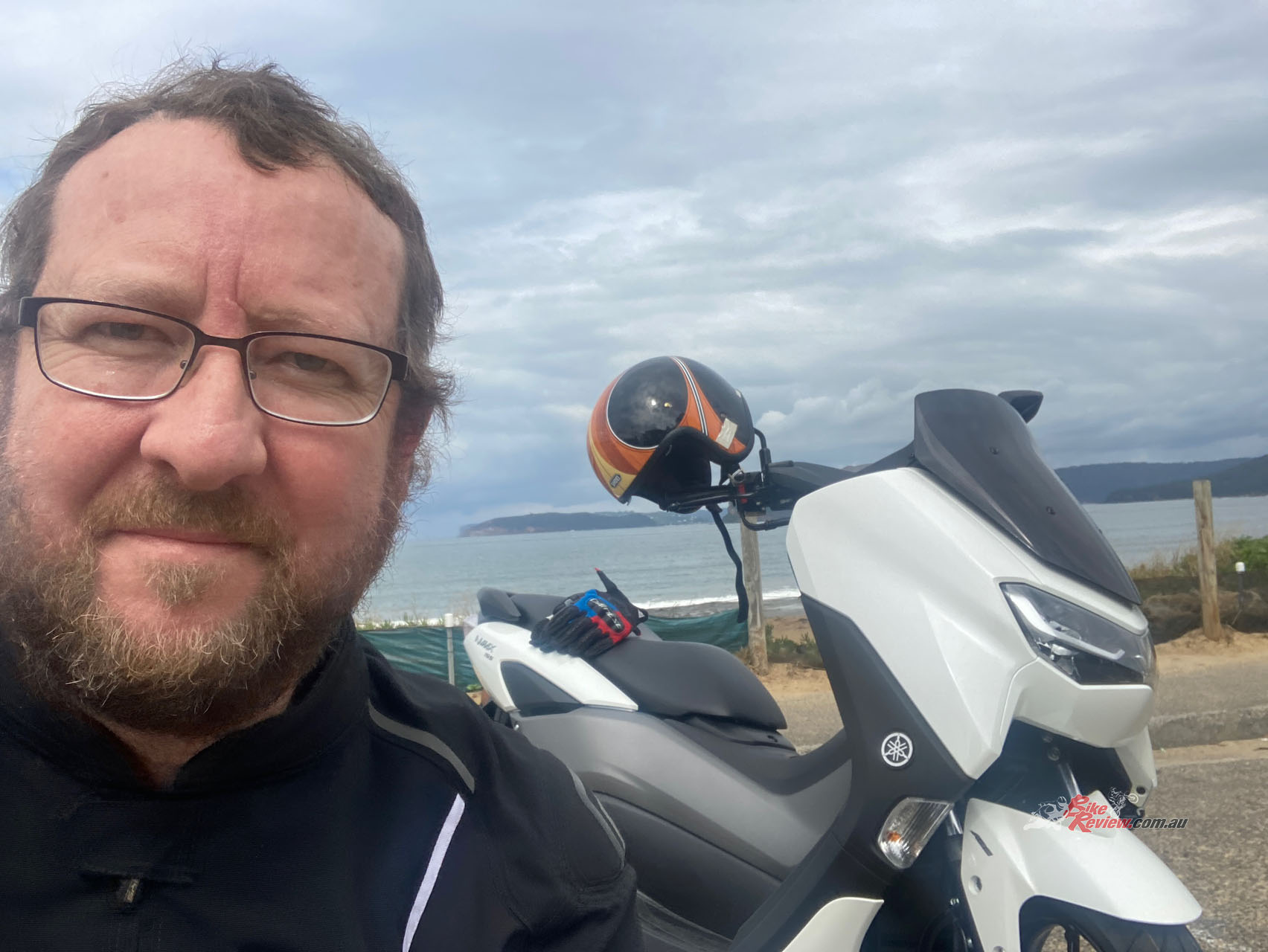
A good head for a full face helmet! Jeff has had a great time running in the NMAX and has plans for a few modifications in the next couple of months. He has the scooter right through until September. Stay tuned for more articles and video. You can also follow the scooter on social media #bikereviewnmax155
Yamaha NMAX 155 Review
The NMAX is one of Yamaha’s most popular scooters globally. Reliable, stylish, well priced, super efficient and with plenty of storage, the previous version was great, but the new model has some really good upgrades that take it to the next level…
We recently spent a bit over a month living with the NMAX 155 day to day and in that time became fans of the stylish scoot. I’m a scooter rider from way back, having owned one when I lived overseas for a period of time as well as in Sydney in the late ’90s early 2000s, which was great transport for Heather and I. You can’t beat the convenience of a scooter around town.
Check out Jeff’s series on the long term Yamaha D’elight 125 he had last year here…
The ease of starting, storage, riding and economy are all benefits that come with scooter ownership along with affordable rego (in some States) and insurance. Servicing can be slightly expensive due to accessibility thanks to bodywork but services are still simple. Tyre life and brake pad life are long and a scoot is less likely to get nicked or attract police attention than a bike. Win win.
The updates for the NMAX 155 current generation from MY22 onwards are outlined below in the official Yamaha tech breakout. I live outside of Sydney and most of the roads in and out of my area are hilly 70 to 80km/h zones. There is also a lot of National Park around, with more open roads and hills, so normally a small capacity scooter would not be ideal and a mid range such as a 300 or 400 more suitable. This, I discovered, was not the case with the NMAX 155.
The engine has an urgency of a larger capacity scooter and can happily cruise on 80km/h all day. Acceleration from zero to 60km/h is impressive and quite good fun between traffic lights. From 60km/h to 100km/h, you would expect a small four-stroke single scoot to drag the chain but it sure doesn’t do this, in fact, it continues with eagerness.
Although I would not rate the previous NMAX 155 as a freeway 110km/h scooter, it could comfortably do short stints on freeways, meaning those commuting could avoid taking the back way and take advantage of toll roads and main routes. But this new one just has that extra go, and does it fine.
The NMAX comfortably sits on 110km/h, and that can be stretched to a 115km/h cruise, and a 120km/h overtake.
The engine is very smooth and vibe free and power delivery is responsive. From a standstill the NMAX has plenty of go and is zippy, with no throttle snatch at all. It is user friendly yet good fun even for a seasoned rider like me. Despite commuting and running errands on the NMAX for over a week, I can’t recall a time it didn’t put a smile on my face during the test period and I always took the long way home. I was looking for excuses to ride the NMAX, even in rainy weather, which is always a clear indicator that it is a good thing and not something I just had parked in the shed for a week.
The exhaust note is whisper quiet, which isn’t a bad thing, but there is still enough note combined with engine noise to make sure fellow road users are aware you are coming through. It would be cool with a neat slip-on though just for laughs! Fuel consumption is of course fantastic, with a range of around 35km/l during my test period running in, for my weight and heavy right hand not bad from the little Blue Core single. The filler is easily accessed in the centre of the foot well on top of the divider that covers the underbone frame. With a 7.1L tank, 280km to 300km should be doable once run-in.
Ergonomics are not bad at all. I’m 187cm and was not cramped, able to place my feet flat or forward, with plenty of room around the knees, particularly now that there is a bit more space in the new design. The divider limits foot position but the advantage of having a proper underbone frame is worth the lost foot space. The handlebars are well placed as are levers and switches. I did find the ignition switch a bit fiddly, you have to push it and turn it to either on, off, open (seats) or lock… It has an alarm in-case you forget to turn it off, and you can set an alarm from a button on the key fob.
Seat height is 765cm and the seat is narrow at the front, which will help shorter riders. The old seat got rock hard after 30-minutes, while this new design is much improved and good for an hour or more. Ground clearance is an impressive 135cm, meaning the NMAX can be cranked over on the 110 and 130 section Dunlop Scoot Smart 13in tyres. With a 26º rake angle and 92mm of trail it is a rewarding and fun scooter in the twisties that owners with a proper bike will appreciate. Fork action is good in scooter terms, with 100mm of travel and only bottoming out over the bad bumps at speed. The rear ride is good too, with 85mm of travel, I set it to the hardest of two preload settings.
At 740mm wide the 155 is ideal for tight traffic situations, where the mirrors offer a reasonable view and the rear brake helps keep the bike balanced. Turning circle is an impressive two meters and the wheelbase 1350mm, with length 1955mm. Feet up U-turns are easy, while parking is a breeze with either a centre-stand or the sidestand to choose from, the latter cutting engine on engagement.
Braking either around town or on more high speed roads is impressive, with good feel from both ends and plenty of power, but it does need a good squeeze. The ABS is active at all times and worked well during my wet road braking tests. The traction control only kicked in occasionally when I intentionally gassed it up on wet roads.
The new NMAX instruments are stylish but easy to read, with the all-new for a Yamaha scooter ability to connect to the Yamaha Connect app. The dash is an all-new design, and although still basic, it has lots more info than the previous round centrally mounted dash. Storage is great, with plenty of room for a full face lid under the seat, a bottle holder at the front left-hand side and a small glove compartment. There are top box options available for those in need of more. Mounting the radiator and thermo fan on the right-hand side of the engine allowed for extra space around the knees for features like storage.
Styling? That is a personal thing but I really like it and the finish is good, particularly for the price range.
If you need a commuter or second transport in the household, this could be a great option.
2024 Yamaha NMAX 155 Technical Highlights (from MY22 onwards)
New Smart Motor Generator System
To provide more environmentally friendly performance, NMAX 155 integrates control of the power unit’s electronic-related functions such as fuel delivery, engine starts/re-starts and power generation into a single part called the Starter Generator Control Unit (SGCU). The SGCU provides integrated control of the Smart Motor Generator System (for quiet engine starts) and the Stop & Start System (to reduce wasted fuel when waiting at traffic lights or other similar situations).
Quiet engine starts
The Smart Motor Generator System enables quieter engine starts and re-starts. Until now, the motor for engine starting and the generator were separate parts, but this model uses a Starter Generator Assembly that combines the functions of both and is governed by the SGCU.
During power generation the SGCU controls the switching of electric current and other functions based on vehicle conditions. Also, the SGCU’s control of electricity generation reduces energy loss during power generation. When starting the engine, the Starter Generator Assembly turns the crankshaft directly without having to drive it through gears, thus eliminating the sound of the meshing gears for quieter starts.
Yamaha’s new Stop & Start System contributes to reduced fuel consumption
This system automatically shuts off the engine when the machine is stopped and idling at traffic lights and the like to reduce wasted fuel. The SGCU provides precise engine control to make extremely quiet engine starts possible. Also, the SGCU monitors running conditions and inhibits unnecessarily frequent engine starts and stops in conditions such as congested traffic. To re-start the engine when stopped, the rider needs only to twist the throttle, causing the engine to quickly re-start and provide a smooth take-off. The Stop & Start System can be turned on or off as desired via a switch.
Variable Valve Actuation for exhilarating acceleration
The engine adopts a Variable Valve Actuation (VVA) system that contributes to linear acceleration characteristics and a pleasing feeling when accelerating. It works via a mechanism that shifts between two intake cam lobes, one for the low rev range and one for the mid to high rev range, with 6,000 rpm as the shifting point. The rocker arm shifting is actuated by a compact solenoid coil with sensitive response characteristics. This mutually complements the torque curve for excellent torque throughout the rev range. The settings for the intake and exhaust components as well as optimised fuel injection settings make the cam switch smooth without any abrupt feel.
New cylinder head, compact combustion chamber, bigger airbox and raised compression ratio
A liquid-cooled, 4-stroke SOHC, 155cc, single-cylinder, 4-valve fuel-injected engine with CVT is adopted. The bore x stroke of 58 mm × 58.7 mm delivers excellent power and torque characteristics.
This engine is a further development of the current NMAX’s liquid-cooled 4-valve fuel-injected unit and makes use of a new cylinder head and a compact combustion chamber to achieve a higher compression ratio. Where the current NMAX has a ratio of 10.5:1, this engine has a higher 11.6:1 ratio, thus boosting combustion efficiency. The intake valve is wider with a 20.5 mm diameter to ensure strong intake efficiency, the cylinder head also has an optimised coolant pathway to improve reliability, and the same spec lightweight forged piston as the YZF-R15 is employed.
Also, features like Variable Valve Actuation (VVA), a DiASil cylinder with excellent heat dissipation, an offset cylinder that reduces horsepower loss, a small-diameter crank pin and narrow conrod design are all carried over from the current model.
New frame design contributing to ride quality, onboard comfort and usability
To find the right balance for styling, ride performance and utility, a new lightweight, high-rigidity frame was designed and adopted for this model. The frame pairs together a 60.5 mm diameter main pipe, 45 mm diameter down tube and 1.6 mm thick reinforcement pieces.
The seating area is now wider to allow more freedom in the sitting position. The width of the footboards has also been increased by 5 mm over the current NMAX, providing additional freedom at the foot area. Also, reviewing the shape of the footboards has brought easy foot reach to the ground.
Optimised front rear suspension settings and ideal chassis rigidity
In finding the balance between the new engine and new frame, the front and rear suspension settings were optimised to achieve a pleasant and comfortable ride. The rear suspension in particular was fine-tuned with road tests and Kanno Hyoka (evaluating motorcycle performance based on test rider perceptions and feedback) through which the ideal balance of the spring constant and damping force was found. The rear helps provide a natural feel to the steering and flexible ride character and is preload adjustable. In addition, newly designed lightweight cast wheels are adopted at both the front and rear to reduce unsprung weight.
Smart Key system equipped
NMAX 155 uses a Smart Key System. If the rider has the Smart Key on their person, the machine detects its presence and allows the operations below to be performed with the main switch knob without needing to insert the key itself:
- Turning power on or off
- Engine starting/stopping – starting requires pulling in the brake lever and pushing the starter button
- Handlebar lock release
- Seat lock release
- Fuel tank lid lock and release
Underseat storage space capable of holding an XL full face helmet
The underseat storage compartment offers a 23.3 L capacity with a space-efficient design that allows a full-face XL helmet to fit inside. The hinge that opens and closes the seat has two springs, so that after unlocking via an easy-to-access button, the seat opens slowly and naturally. It can also stay open by itself, making it simple to put in or take out items. There are also two helmet hangers on the outside part of the trunk liner that add even more convenience.
Easy-to-read full LCD instrument panel
An easy-to-read full LCD instrument cluster shows remaining fuel, water temperature and the current time. It can also display an odometer, trip meter, fuel consumption (current and average), voltmeter and other data. A convenient lever-style switch on the left handlebar cycles through displayed data. Also, when stopped, a maintenance tripmeter can be displayed to show how long until the next oil change or V-belt change.
Yamaha Connect enabled
Download the Yamaha Connect app to get more from your NMAX ownership. The app features a wide range of functions.
New lighting design and function
Both front and rear lights are slightly raised upward to fit with the upright riding position and give the machine a light, nimble look. The design of the LED headlight — positioned approx. 14 mm higher than the current model — is reminiscent of car headlights with a dual light appearance and six LED bulbs in total for a bold look. The taillight is also 47 mm higher and gives the machine a nimbler look from the rear, while the light guides inside give it a unique appearance.
2024 YAMAHA NMAX 155 SPECIFICATIONS
Price: $6,249 R/A
Warranty: One-year, unlimited kilometre
Colours: Milky White, Dark petrol
Claimed power: 11.1kW@8000rpm
Claimed torque: 14.4Nm@6000rpm
Wet weight: 127kg
Fuel capacity: 7.1L
Engine: Liquid-cooled, SOHC, single-cylinder, fuel injected four-valve, four-stroke, 155cc, 58 x 58.7mm bore x stroke, 11.6:1 compression, V-Belt Automatic, Variable Valve Actuation (VVA), CVT drive.
Chassis: Lightweight, small diameter steel tube frame, Unit swingarm
Suspension: Telescopic forks, 100mm travel, dual rear shocks, 85mm travel
Brakes: ABS, single 230mm front and rear rotors, single-piston calipers
Wheels & Tyres: Alloy multi-spoke 13inch wheels, 110/70 – 13, 130/70 – 13
Dimensions:
Wheelbase: 1350mm
Seat height: 765mm
Overall height: 1115mm
Overall width: 740mm
Overall length: 1955mm
Ground clearance: 135mm
Instruments & Electronics: Multifunction LCD display, ABS, Keyless Fob, Yamaha Communication Control Unit (YCCU) dash, Traction Control System
Ratings | Yamaha NMAX 155 Review | Staff Bikes, Jeff’s new scooter, month one

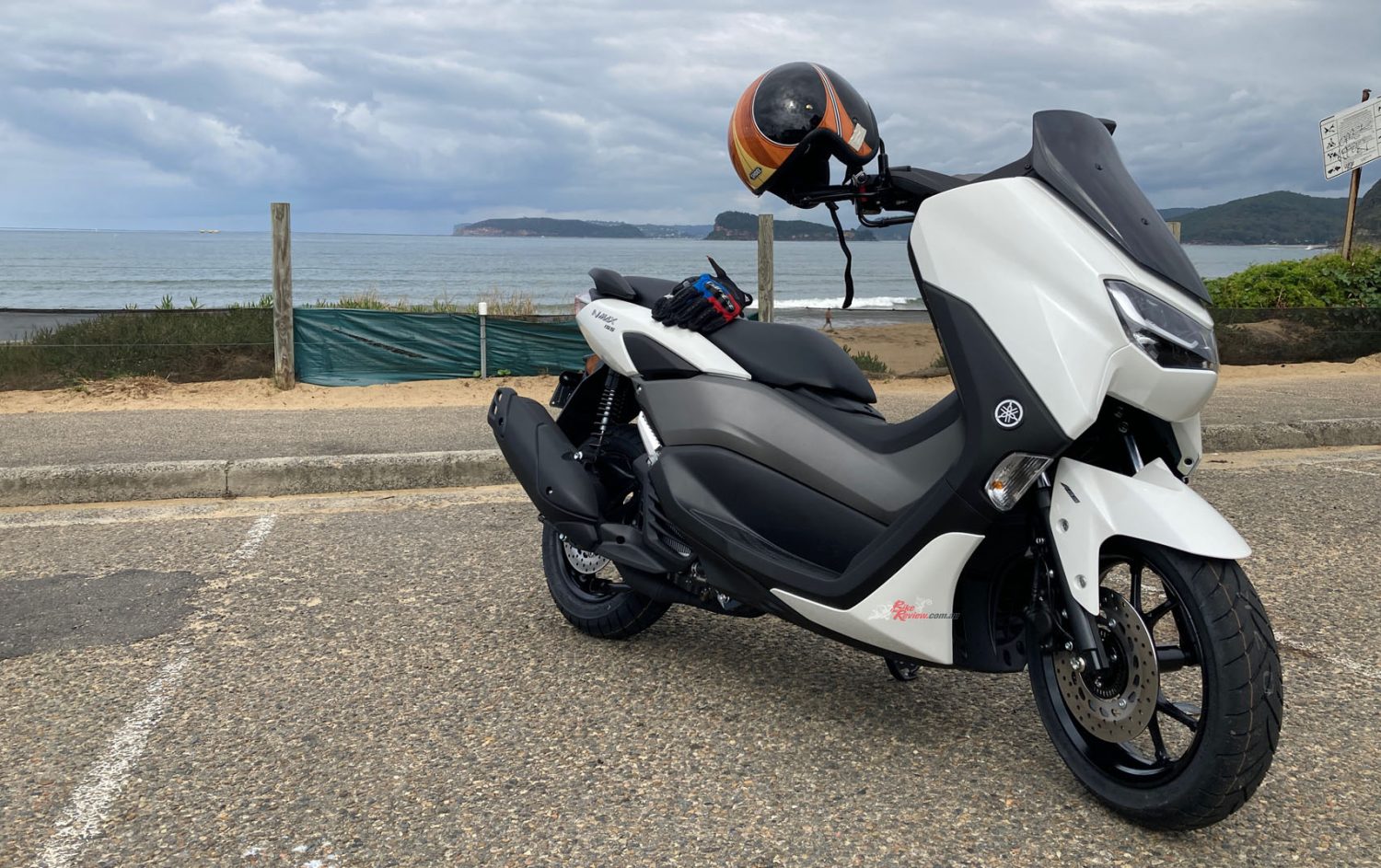
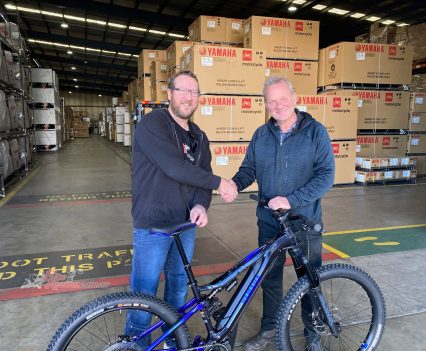
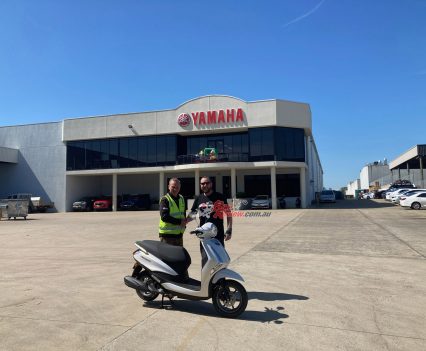

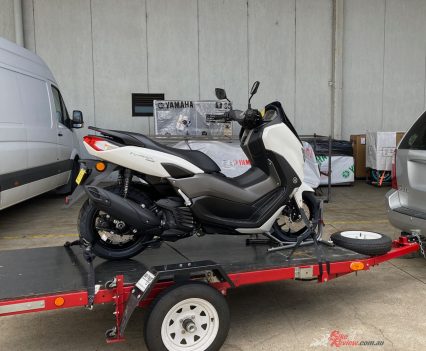
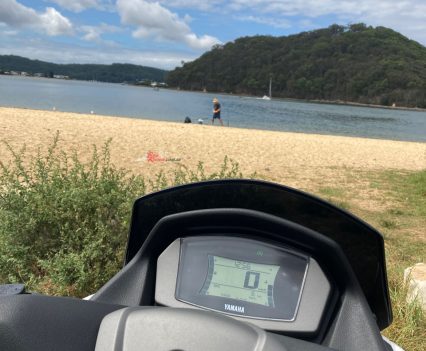
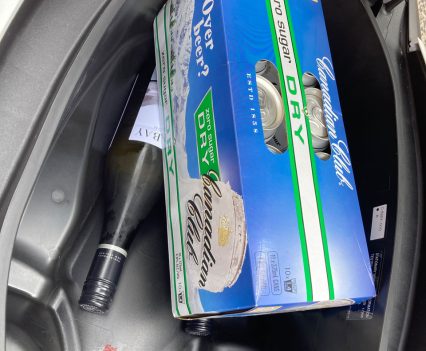
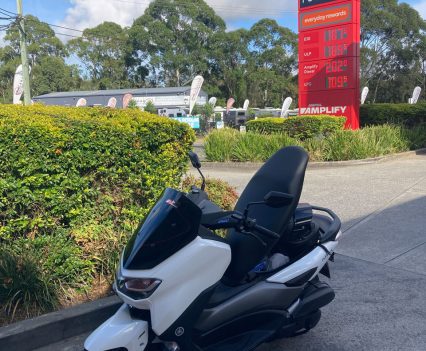

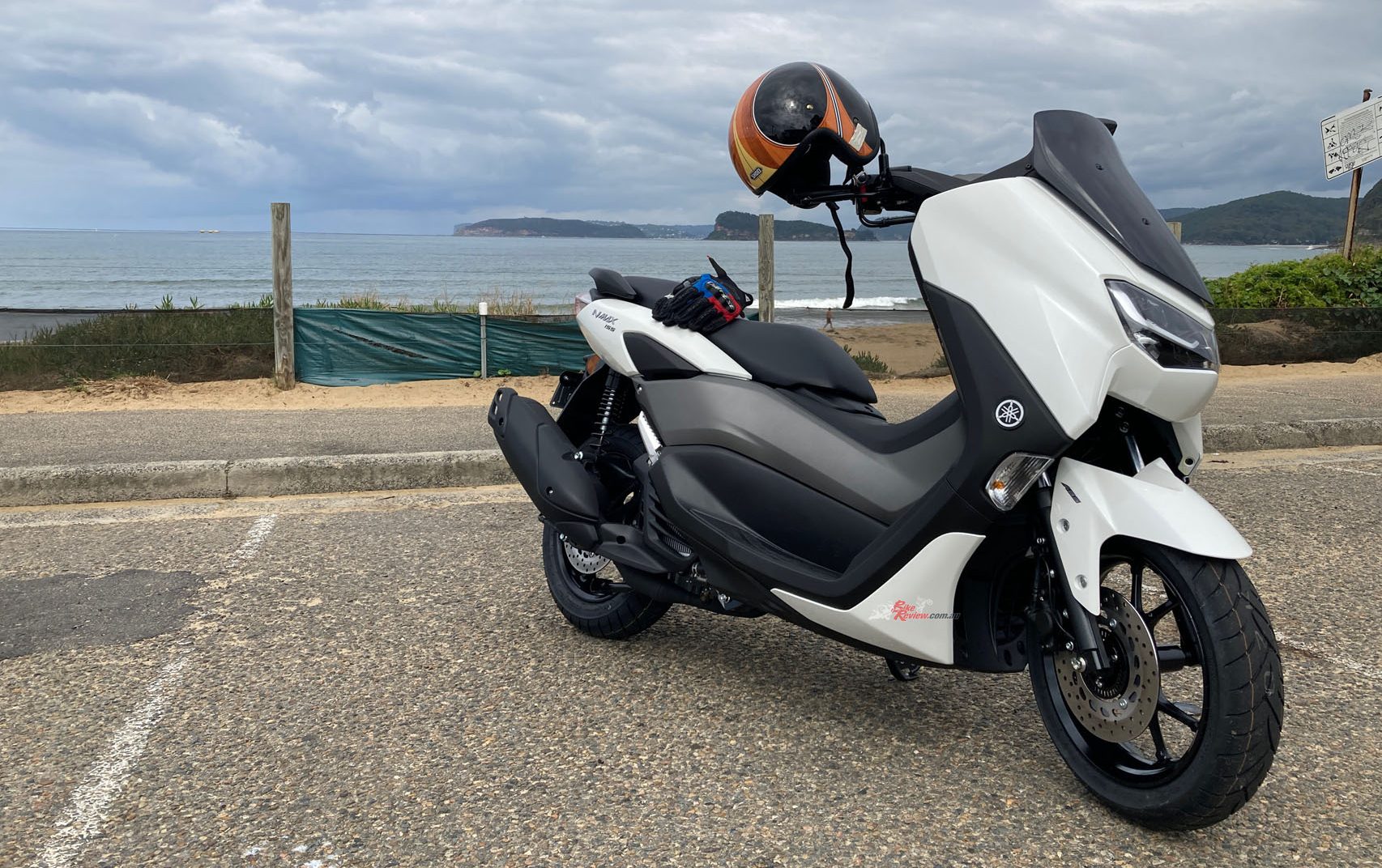


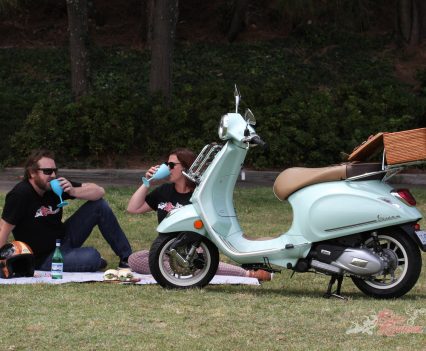
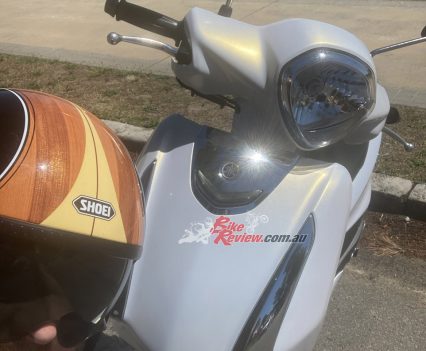
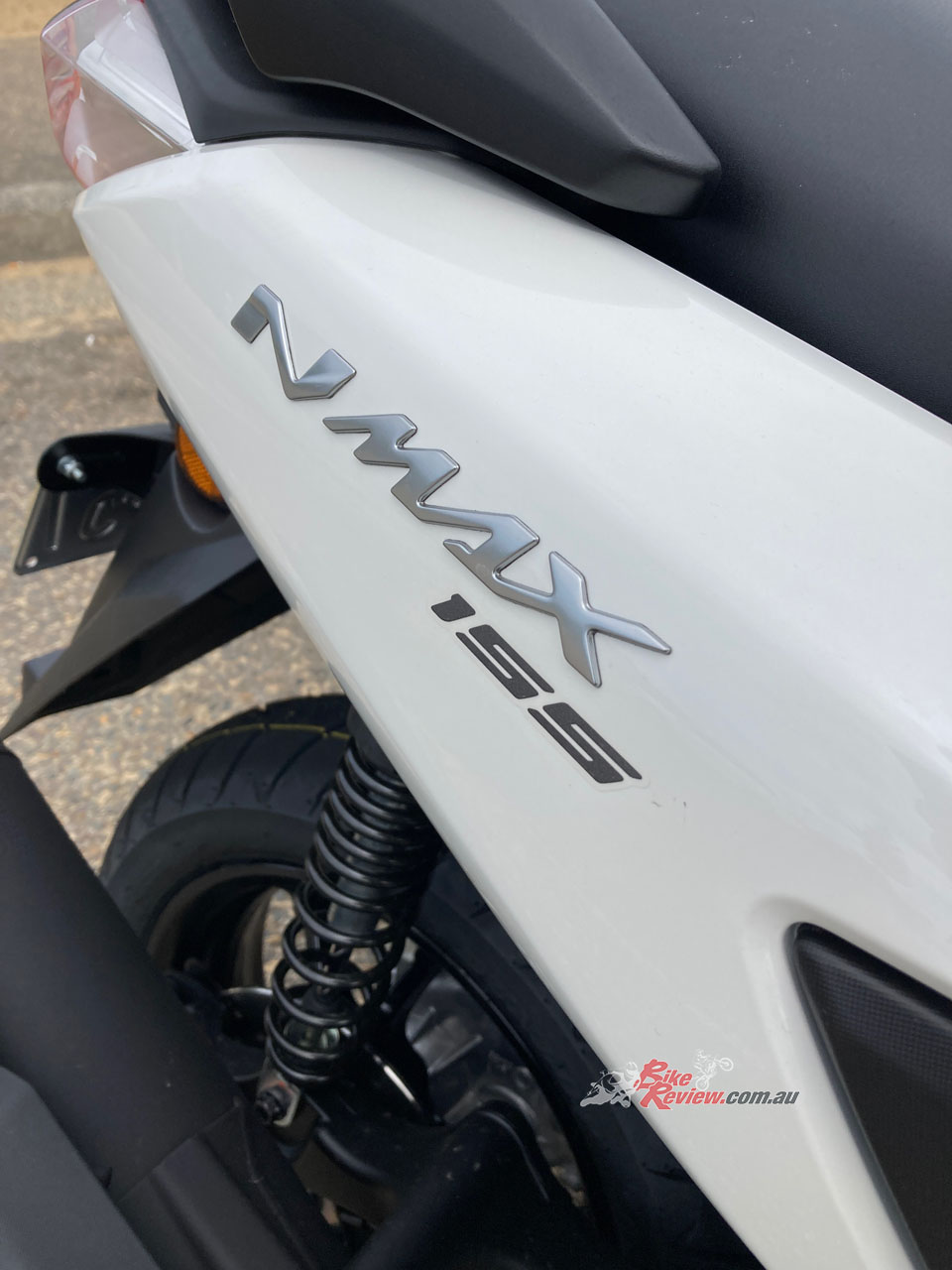
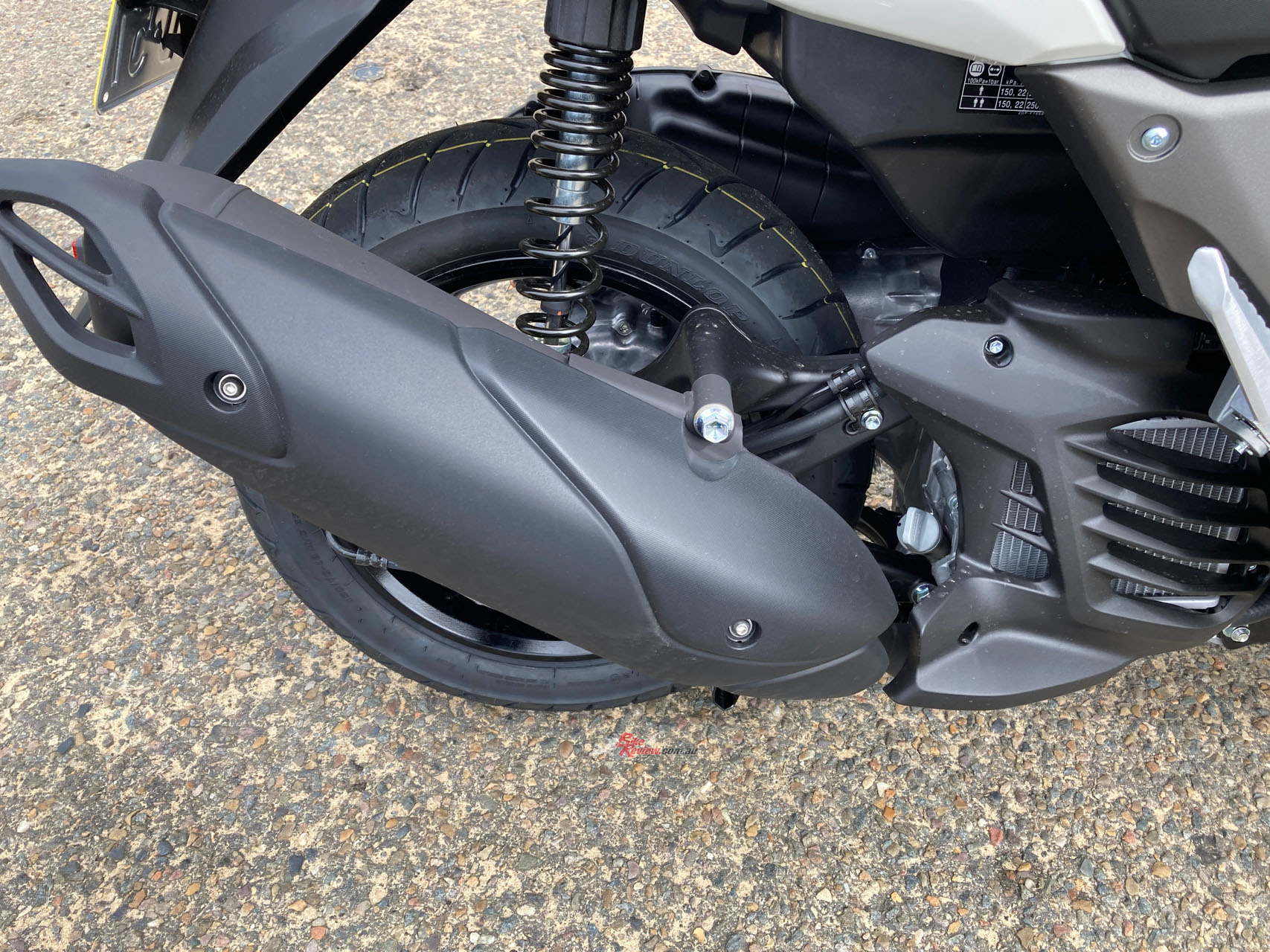

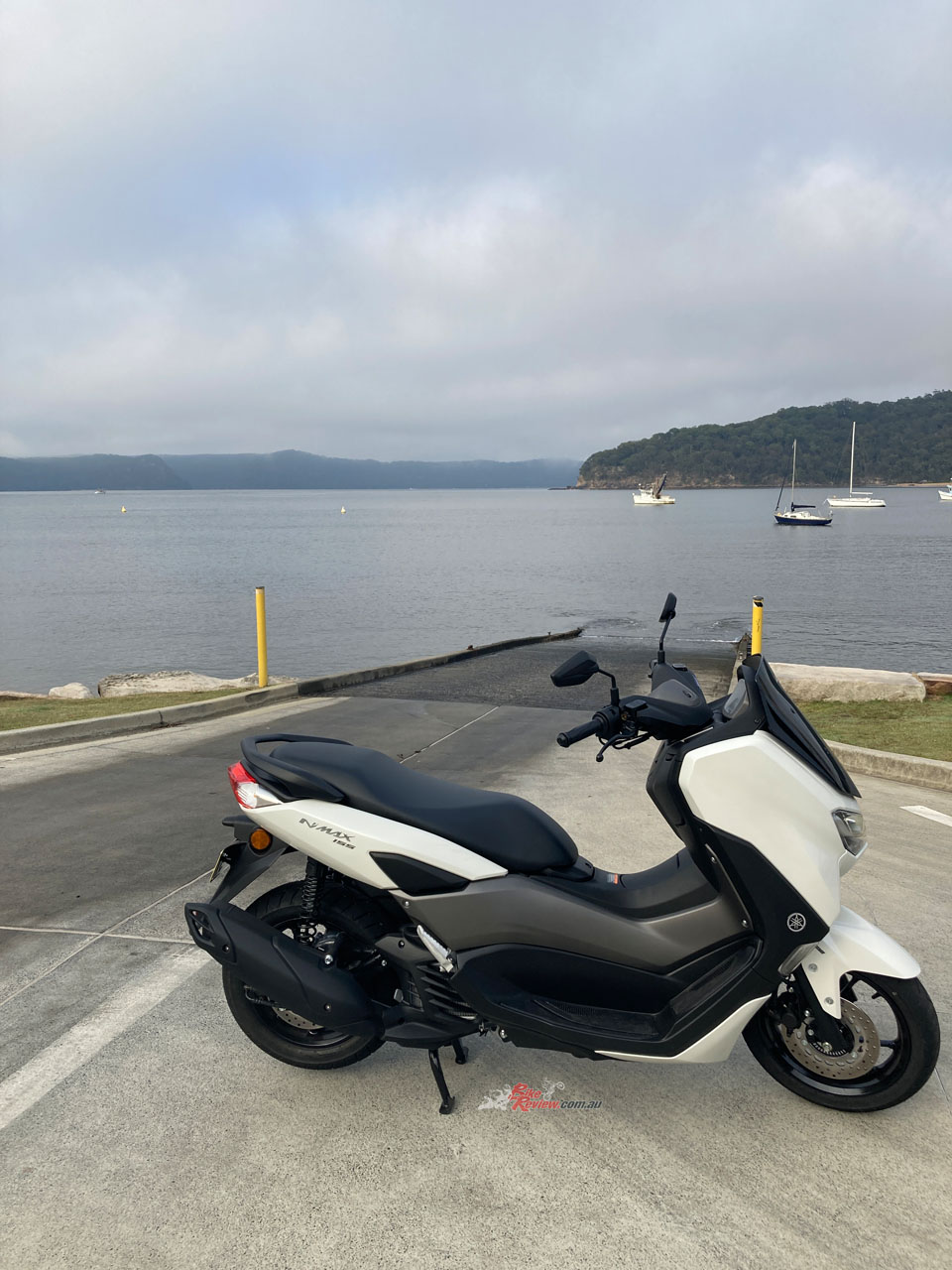
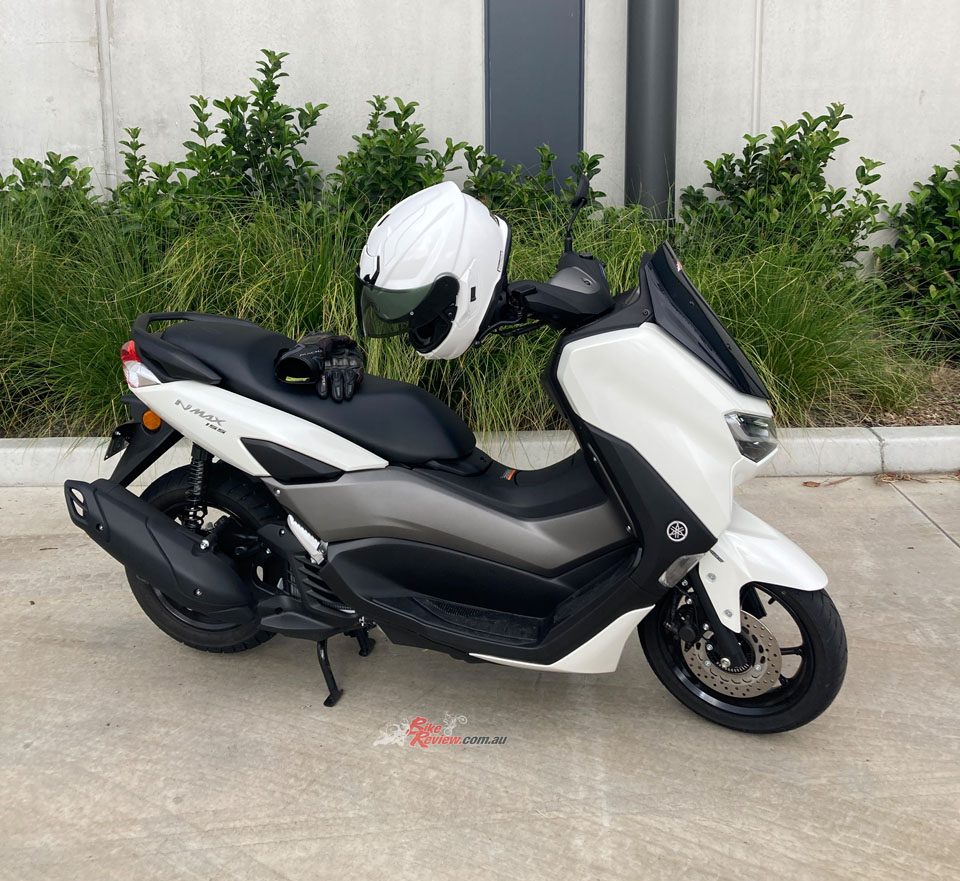
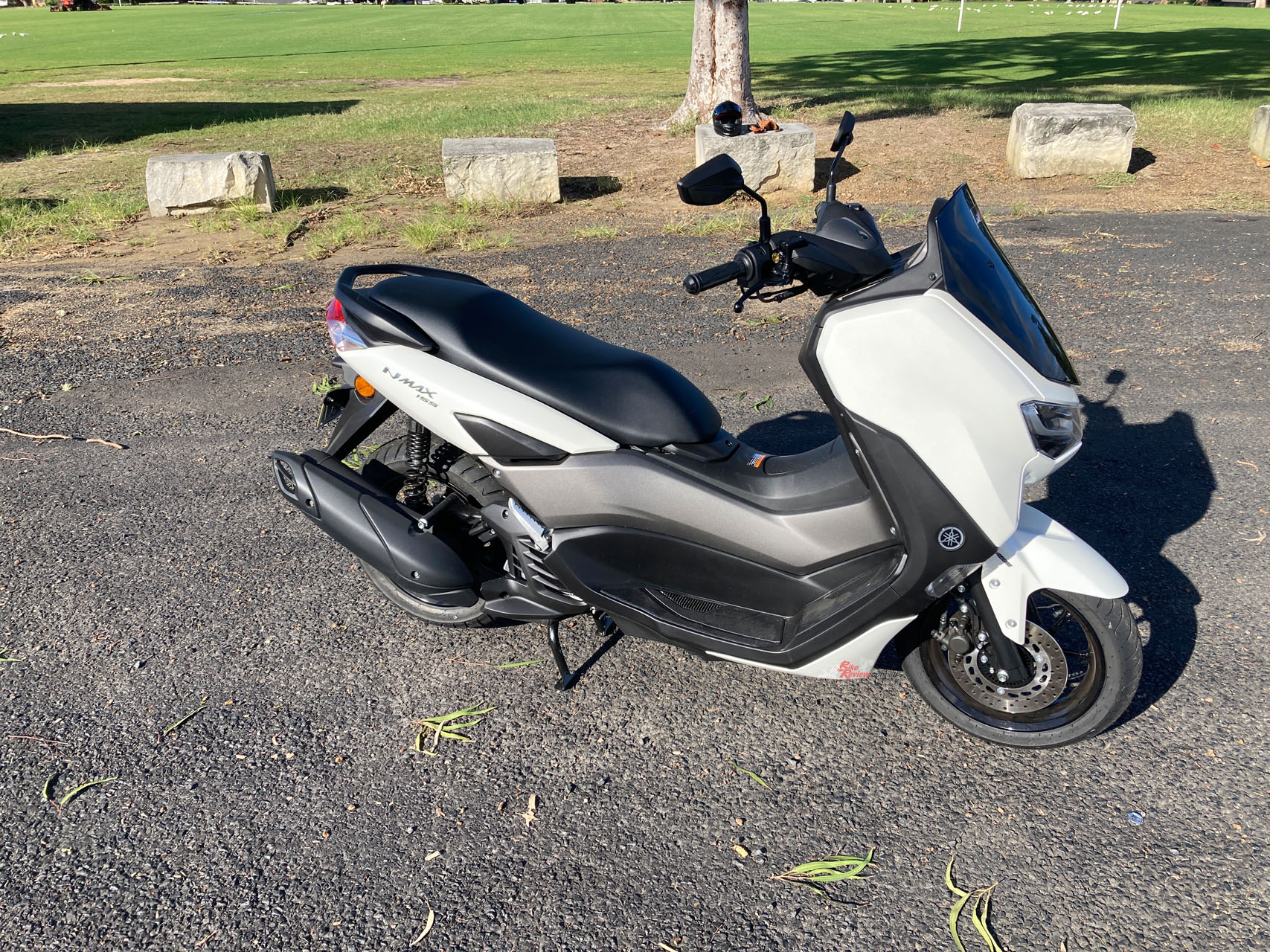
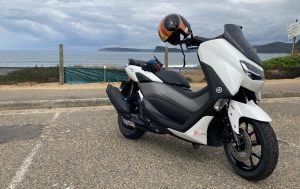

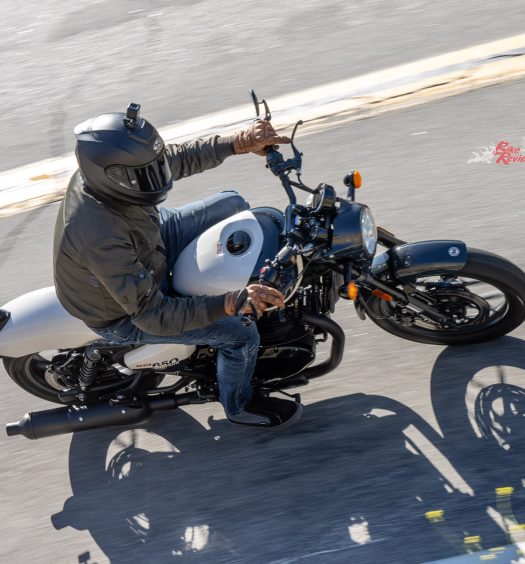






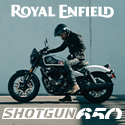






June 10, 2024
I am furious.
I bought last model several weeks ago.
The Salesman at Frasers Brookvale lied to me.
He told me the only change would be a shape in headlight and color change.
But clearly the changes are rather significant (especilaly for me at highway use !!!!!)
I HAVE BEEN RIPPED OFF. Old model should have been at least $700 chepaer – it was not.
June 11, 2024
Hi there – what year model did you buy? The NMAX is unchanged for two years. The model tested is 2024, which is the same as 2023. Let me know, Jeff.
June 11, 2024
Thanks Jeff.
I think the wording had me confused. Mine is MY23 (late last year build date)
You say ” but the new model has some really good upgrades that take it to the next level… ”
I assumed you were referring to the new 2024 model over the the MY23 and just before model.
But I think the features you listed are the changes that came in 2 years ago.
A summary of 2024 updates over last years would clarify.
Thanks
June 13, 2024
Yes, I should reword that – upgrades over the previous generation, I’ll do that now. It’s a great scooter, you will enjoy it. Jeff.